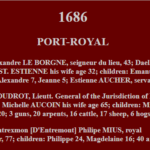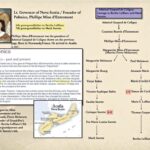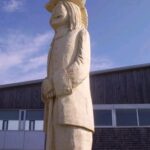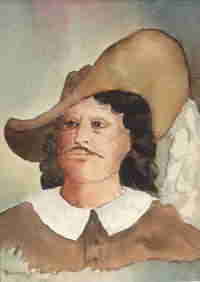
Philippe Mius D’entremont
Date of Birth
November 4, 1609
Place of Birth
Cherbourg, Normandy, France
Towns / Cities Moved Into
Cherbourg, Normandy, France |
Port Royal, Acadia
Known Occupation
Lieutenant-major
Religion
-
Spouse
Death Information
Year of death
1700
Place of death
West Pubnico, Nova Scotia, Grand-Pre, Acadia, Nova Scotia, Canada
Cause of death
-
Burial location
Saint-Charles-des-Mines
Grand Pré, Kings County, Nova Scotia, Canada
Parents

Claude Antoine Demeullon

Beatrice Decoligny D' Entremont
Marital Status
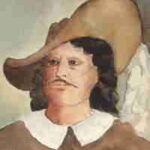

Married Madeleine Elie Hélie
1648
Calvados
Children





Narrative / Story
Philippe Mius d’Entremont was born in 1609 in Cherbourg, located in the Manche department of Normandy, France. Cherbourg, a significant port city in the Basse-Normandie region, played an essential role in France’s maritime activities during the 17th century. Growing up in this environment, Philippe was well-acquainted with the sea and the opportunities it offered. His noble birth provided him with the education and connections that would later facilitate his role in French colonial expansion.
Philippe Mius d’Entremont’s migration to Acadia in 1651 was part of a broader French strategy to expand its colonial presence worldwide. At that time, France was establishing colonies across North America, the Caribbean, Africa, and Asia. These efforts were aimed at spreading French influence, securing valuable resources, and countering the colonial ambitions of other European powers like Britain and Spain.
In 1651, Philippe Mius d’Entremont migrated to Acadia, a region of New France, alongside Charles de Saint-Étienne de la Tour, who was returning to resume his role as governor. La Tour, a key figure in Acadia’s history, was responsible for defending the colony against both British forces and internal French conflicts. Philippe served as La Tour’s major-general, a position that set the stage for his later role as a baron in Acadia.
In 1653, Charles de La Tour granted Philippe Mius d’Entremont a tract of land along Pubnico Harbour, which became known as the Barony of Pobomcoup. Philippe established the first barony in Acadia and the second in all of Canada. This settlement, now known as Pubnico, remains the oldest Acadian village still occupied by the descendants of its founder. The barony included a château, a chapel, and other essential structures, laying the foundation for a thriving community.
Historians tell us that the name “Pubnico” may derive from the Mi’kmaq word “Pogomkook,” meaning “a place where in winter one can go and fish eels in the harbour by cutting holes in the ice.” When the French arrived, the name was pronounced “Pobombcoup”, which in turn was shortened to “Pombcoup”, and eventually to “Pubnico” with the arrival of the English. This evolution reflects the cultural and linguistic changes in the region over time.
Philippe’s wife, Madeleine Hélie, was a key figure in the establishment of the Acadian society in Pubnico. The couple had five children, with their daughter Marguerite marrying Pierre Melanson, the founder of Grand-Pré. The Mius d’Entremont family played a central role in the early Acadian community, with their descendants continuing to influence the region’s development.
Today, Pubnico is a vibrant community that honors its Acadian roots. The village has remained a center of Acadian culture, with many residents tracing their ancestry back to the Mius d’Entremont family. The barony established by Philippe Mius d’Entremont is commemorated through monuments and historical markers, such as the monument unveiled in 1951 during Pubnico’s Tercentenary Celebrations.
The monument dedicated to Philippe Mius d’Entremont can be visited in West Pubnico.
Philippe Mius d’Entremont lived out his final years in Acadia, passing away around 1700. His legacy, however, lives on through the continued presence of his descendants in Pubnico and the lasting impact he had on the region’s development.

